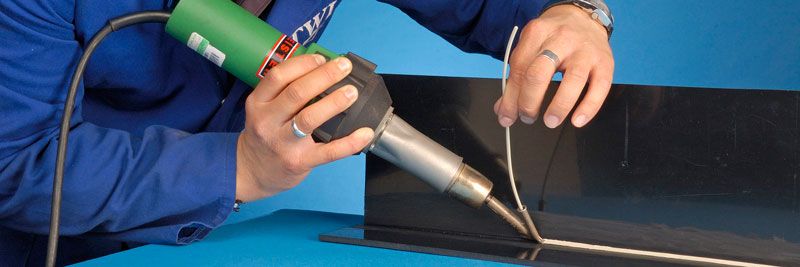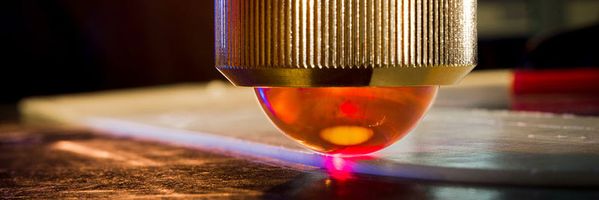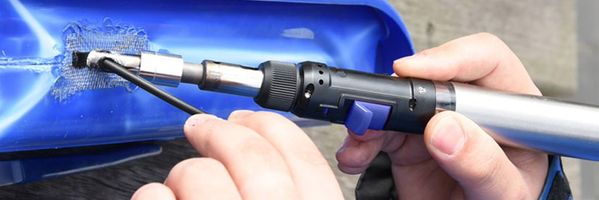Shop Now
- Welding Consumables
- Welding Torches & Torch Spares
- Welding Machines
- Plasma & Cutting Machines
- Welding Machine Spare Parts & Accessories
- Welding Fume Extraction Equipment
- Gas Welding Equipment
- Welding Abrasives
-
Welding Safety Equipment
- Welding Helmets
-
Welding Helmet Spares
- Speedglas Spares
- Betaweld Spares
- Cigweld Spare Parts & Accessories
- Flip Front Helmet Spares
- Jackson Spares & Accessories
- Lincoln Electric Spare Parts & Accessories
- Miller Spares & Accessories
- RPB Spares
- Servore Spares
- Unimig Spare Parts & Accessories
- Weldclass Spares & Accessories
- Miscellaneous Helmet Lens
- Welding Gloves
- Protective Workwear
- Welding Blankets
- Welding Screens & Curtains
- Ear Protection
- Eye Protection
- Face Protection
- Hand Protection
- Head Protection
- Respiratory Protection
- Sun Protection
- Hydration Products
- Fire Blankets
- Prestart Books
- Safety Signage
- Safety Tags
- Hazard Tape
- Welding Accessories
- Pipe Welding Equipment
-
Cutting & Drilling
- Bandsaws
- Bandsaw Blades
- Bandsaw Accessories
- Coldsaws
- Core Drills & Accessories
- Cutting & Milling Blades
- Diamond Blades
- Drill Bits
- Holesaws
- Magnetic Base Drills
- Metal Working Lubricants
- Pipe Bevelling
- Pipe Cutting Equipment
- Pipe Tee Pulling Kits
- Pipe Threading Machines
- Plasma Table Water Additives
- Punching Machines
- Welding Merchandise
- Gift Cards
- Clearances
-
Hire
- Hire Equipment
- Hire Heating Equipment
- Hire Degausing Equipment
- Hire Welding Automation
- Hire a Welding Positioner
- Hire a Turning Roller
- Hire a Diesel Welder
- Hire a Wirefeeder
- Hire a Multi-Process Welder
- Hire Accessories
- Hire a MIG Welder
- Hire a TIG Welder
- Hire a Stick Welder
- Hire a Plasma Cutter
- Hire a Weld Cleaner
- Hire a Stud Welder
How to Weld Plastics - The Ultimate Guide
Image credit: Courtesy of TWI Ltd
Plastic welding is a valuable skill that is utilised in various industries, including automotive, manufacturing, and construction. Unlike traditional welding methods, which require intense heat to join metals together, plastic welding involves using heat and pressure to fuse plastic materials.
Whether you are a professional looking to enhance your skills or a DIY enthusiast interested in repairing plastic items, this ultimate guide to welding plastics will provide you with the knowledge and techniques to mastering the skill.
Understanding the Different Types of Plastic Welding
Laser plastic welding in action
When it comes to welding plastics, there are several techniques that professionals can utilise depending on the specific applications and materials involved. Understanding the different types of plastic welding is crucial in order to choose the appropriate method for each project.
Here are some of the most common types of plastic welding:
Hot Gas Welding
Hot gas welding, also known as hot air welding or hot gas fusion welding, is a technique commonly used for thermoplastic materials. In this method, a high temperature is generated by a heat source, such as a hot air gun or a welding torch, to soften the plastic surface. The softened plastic is then joined or welded together under pressure, creating a strong bond. Hot gas welding is versatile and can be used for various plastic materials such as PVC, polyethylene, polypropylene, and more.
Ultrasonic Welding
Ultrasonic welding utilises high-frequency vibrations to create frictional heat between the plastic parts that need to be joined. The parts are pressed together under pressure while ultrasonic vibrations are applied, causing the plastic to melt and form a bond. This method is commonly used for thermoplastics and is especially effective for joining small or delicate parts. Ultrasonic welding is widely used in industries such as electronics, medical devices, automotive, and packaging.
Extrusion Welding
Extrusion welding is a method typically used for joining large plastic structures or repairing plastic components. This technique involves heating a plastic welding rod or filler material and forcing it through a heated extrusion nozzle. The molten plastic is then applied to the parts that need to be joined, creating a strong and continuous weld. Extrusion welding is commonly used in applications such as constructing plastic tanks, pipes, and lining systems.
Spin Welding
Spin welding is a friction-based welding technique that involves rotating one plastic part against another under pressure. The friction generated by the rotation creates heat, causing the plastic surfaces to melt and bond together. This method is often used for joining circular or cylindrical parts, such as bottle caps, filters, or tubes. Spin welding is fast, efficient, and provides a strong bond.
Laser Welding
Laser welding is a precise and high-precision welding technique that utilises laser beams to melt and join plastic parts. The laser beam is focused on the welding area, melting the plastic and creating a bond. Laser welding is often used for small or intricate plastic components, where precision and minimal heat transfer are crucial. This method is commonly used in industries such as electronics, medical devices, and automotive.
Each type of plastic welding has its own advantages and limitations, and the choice of technique depends on factors such as the type of plastic material, the desired strength of the bond, the size and shape of the parts, and the specific application requirements. By understanding the different types of plastic welding, professionals can select the most suitable method for their projects and ensure high-quality and durable results.
Essential Tools and Equipment for Plastic Welding
Image credit: Kincrome.com.au
When it comes to welding plastics, having the right tools and equipment is essential to ensure a successful and efficient welding process. Here are some of the essential tools and equipment commonly used in plastic welding:
Welding Machine
A plastic welding machine is the main tool used for joining plastic parts. There are different types of welding machines available, such as hot air welders, ultrasonic welders, extrusion welders, and laser welders. The choice of welding machine depends on the specific welding technique being used and the type of plastic material being welded.
Welding Rods
Plastic welding rods, also known as filler rods, are used to provide additional material for the welding process. The plastic welding rod is melted along with the plastic surfaces being joined, creating a strong bond. The type of welding rod used depends on the type of plastic material and the welding technique being employed.
Heat Source
Different plastic welding techniques require different heat sources. Hot air welders utilise a hot air gun or welding torch to generate the required heat, while laser welders use concentrated laser beams. It is important to have a reliable and precise heat source that can reach the desired temperature for the specific plastic material being welded.
Welding Nozzles or Tips
Welding nozzles or tips are attachments for hot air welders and extrusion welders. They help direct the heat and airflow to the desired area, ensuring proper melting and bonding of the plastic surfaces.
Clamps or Fixtures
Clamps or fixtures are used to hold the plastic parts in place during the welding process. They ensure that the parts are properly aligned and in close contact, allowing for a strong and uniform bond.
Safety Equipment
As with any welding process, safety should be a top priority. Safety equipment such as safety glasses, gloves, and protective clothing should be worn to protect against potential hazards.
8 Common Steps to Welding Plastics

Roughening the plastic surface to create a rough texture helps enhance adhesion during the plastic welding process.
Step 1: Prepare the Work Area
Before starting the welding process, ensure that your work area is clean and free from any potential hazards. Remove any flammable materials and make sure you have proper ventilation to minimise exposure to toxic fumes. Additionally, have all the necessary tools and equipment readily available to facilitate a smooth welding process.
Step 2: Choose the Right Welding Technique
There are several welding techniques available for joining plastics, including hot gas welding, ultrasonic welding, and solvent welding.
Each technique has its own advantages and is suitable for different types of plastics. Research and select the appropriate welding technique based on the specific materials you are working with.
Step 3: Prepare the Plastic Surfaces
To achieve a strong and seamless weld, it's crucial to properly prepare the plastic surfaces before welding. Begin by cleaning the surfaces using a mild solvent to remove any dirt, grease, or contaminants. Next, roughen the surfaces using sandpaper or a file to create a rough texture that will enhance adhesion.
Step 4: Set Up the Welding Equipment
Depending on the chosen welding technique, set up the necessary equipment accordingly. For hot gas welding, ensure that the welding torch is connected to a suitable gas source and adjust the temperature and flow rate as per the manufacturer's recommendations. If using ultrasonic welding, ensure that the ultrasonic welding machine is properly calibrated and functioning correctly.
Step 5: Perform the Welding Process
Carefully position the plastic parts to be welded, ensuring they are aligned correctly. For hot gas welding, hold the welding torch at a slight angle and move it evenly along the joint, applying gentle pressure to melt the plastic surfaces. For ultrasonic welding, bring the parts into contact and apply pressure while activating the ultrasonic vibrations.
Step 6: Allow the Welded Joint to Cool and Solidify
After completing the welding process, allow the welded joint to cool and solidify before handling or subjecting it to any stress. Cooling times may vary depending on the types of plastics used and the welding technique employed. Avoid premature manipulation of the joint, as it may weaken the bond.
Step 7: Evaluate and Test the Welded Joint
Once the joint has cooled, evaluate its quality and integrity. Check for any visible defects, such as gaps or voids, and inspect the joint for proper alignment and strength.
Step 8: Post-Welding Finishing
If necessary, perform any post-welding finishing tasks, such as smoothing rough edges or removing excess weld material. Use appropriate tools and techniques to achieve a polished and aesthetically pleasing final product.
This sounds way too difficult ...
One alternative to plastic welding is the use of popular bonding agents such as J-B Weld. These type of agents form a durable bond to most major plastic types and are fast setting. Look for J-B Weld at Bunnings or other major hardware outlets.
Mastering the Skill of Plastic Welding
By having the essential tools and equipment, you can effectively perform plastic welding and achieve high quality and durable results.
Whether you are a hobbyist looking to enhance your DIY projects or a professional seeking to expand your career prospects, the art of plastic welding offers numerous advantages.
If you would like support on any of the tools or equipment mentioned in this blog, please reach out to the experts at Alphaweld – call us on (08) 9456 8000 or email sales@alphaweld.com.au.




